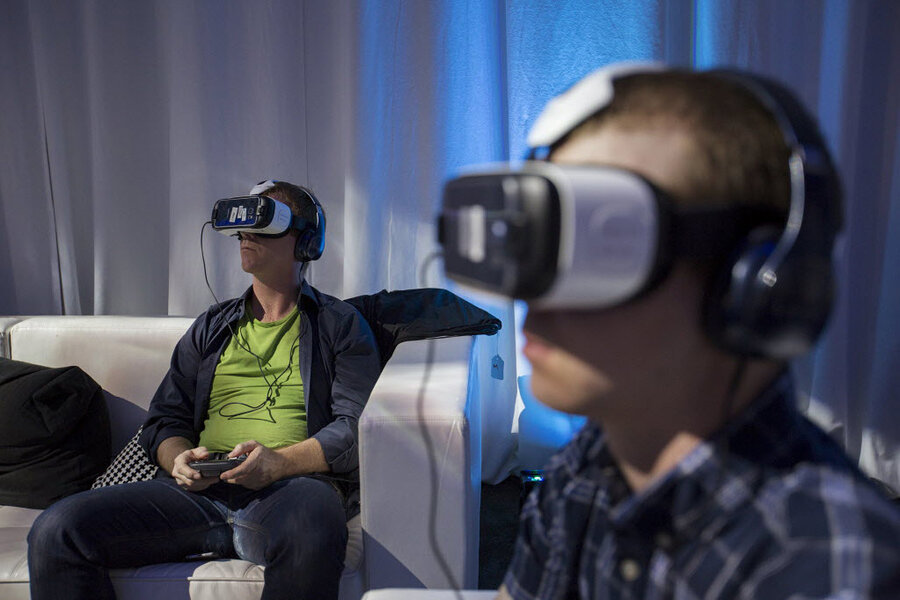Ready to travel to Mars? You virtually can.
Loading...
Imagine waking up on Mars tomorrow. You get out of bed, take a look around you, pull out a pouch of space breakfast as you walk past a colleague jogging on a treadmill. Then, you choose a spacesuit, put it on, and go out to explore Mars on foot or in your rover.
Later this year, this will be possible to do, albeit through a virtual reality (VR) simulation developed by a Florida-based media company called Fusion, with the help of NASA and a graduate student from the Massachusetts Institute of Technology.
NASA already uses VR to train astronauts for deep space missions, so extending the technology to the general public was an obvious step, said Jason Crusan, director of advanced exploration systems at NASA.
“Beyond practical uses for training, virtual reality offers us a compelling method to share the work we’ve been doing to design sustainable human missions and to inspire the next generation of pioneers in space,” Dr. Crusan told Fortune.
To develop an authentic Mars experience, game developers visited NASA’s Johnson Space Center in Houston to check out the hardware and software the space agency is developing for its Mars missions planned for the 2030s.
They drove a prototype rover in the space center’s parking lot and visited NASA’s virtual reality lab, where astronauts are training for missions. The game designers also used real topographic data from Mars to allow gamers to walk or drive the Mars rover across several square miles of the planet’s terrain, as they work on research-oriented mission goals, as Fortune reports.
Living conditions in the game will be informed by the work of aeronautics and astronautics graduate student Sydney Do from MIT's Strategic Engineering Research Group, where he is studying how to sustain life on Mars.
"I look at things like life support, habitat architecture, costs, and plant growth systems," he told Phys.org.
Mr. Do grabbed Fusion’s attention in 2014 when he co-wrote a paper that challenged the technical feasibility of the “Mars One” project, which was launched in 2012 by a Dutch nonprofit that says it’s planning to establish the first human colony on the Red Planet starting in 2020. More than 200,000 people answered the organization's call for volunteers to travel one way in order to start the Martian colony.
“Their work on the Mars One feasibility study was what gave Fusion the idea [for] this project,” Julian Reyes, a VR producer and designer at Fusion, told Phys.org.
The company will preview the game in March at the South by Southwest festival in Austin, and says it plans to release it widely by this summer.
The game will be free on Google Cardboard, Facebook’s Oculus Rift, and Samsung Gear VR. Eventually, Fusion will launch a version of it on PlayStation VR and HTC Vive.
The original soundtrack for the game is performed by the Vienna Philharmonic Orchestra, according to the company.







